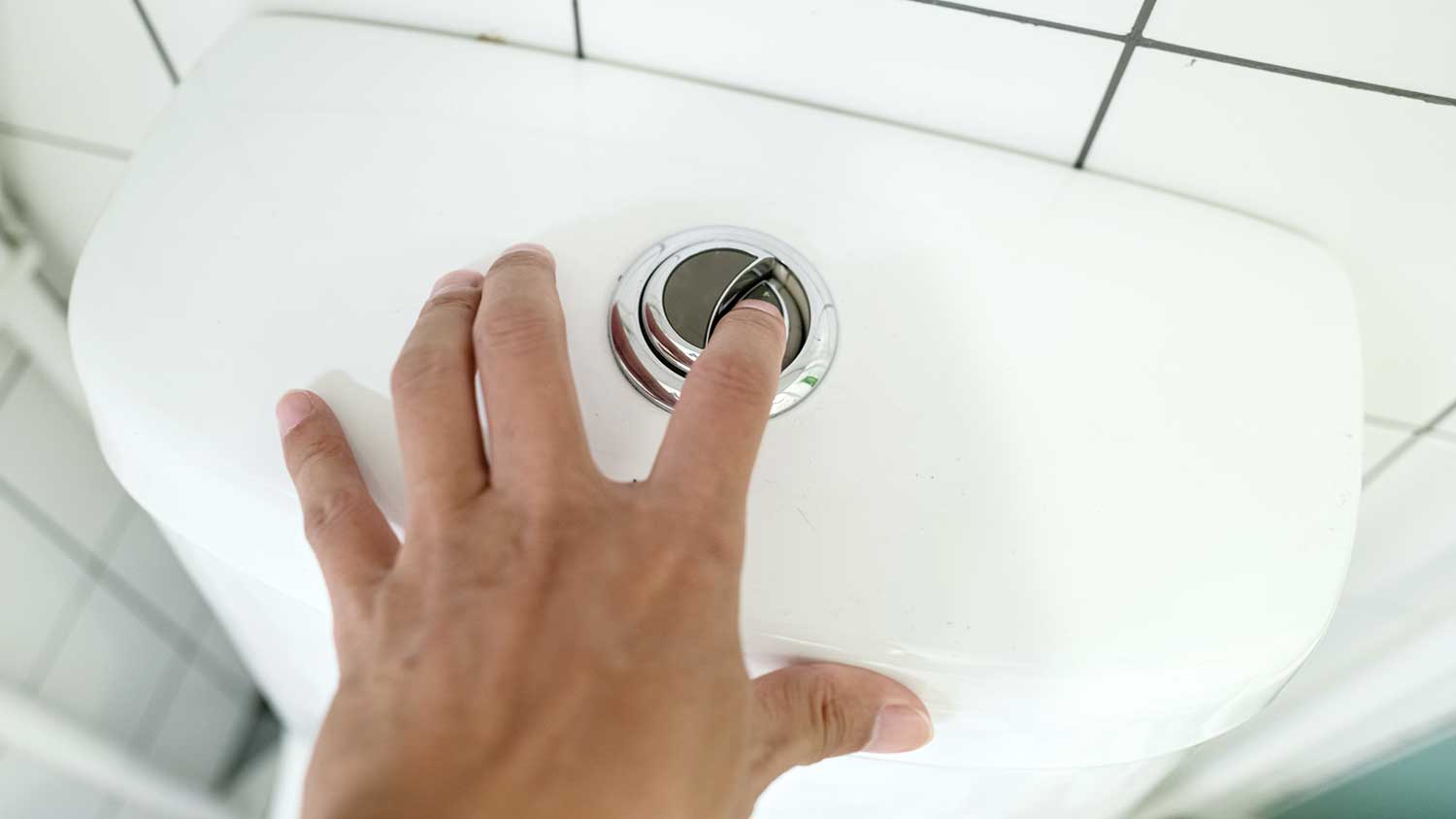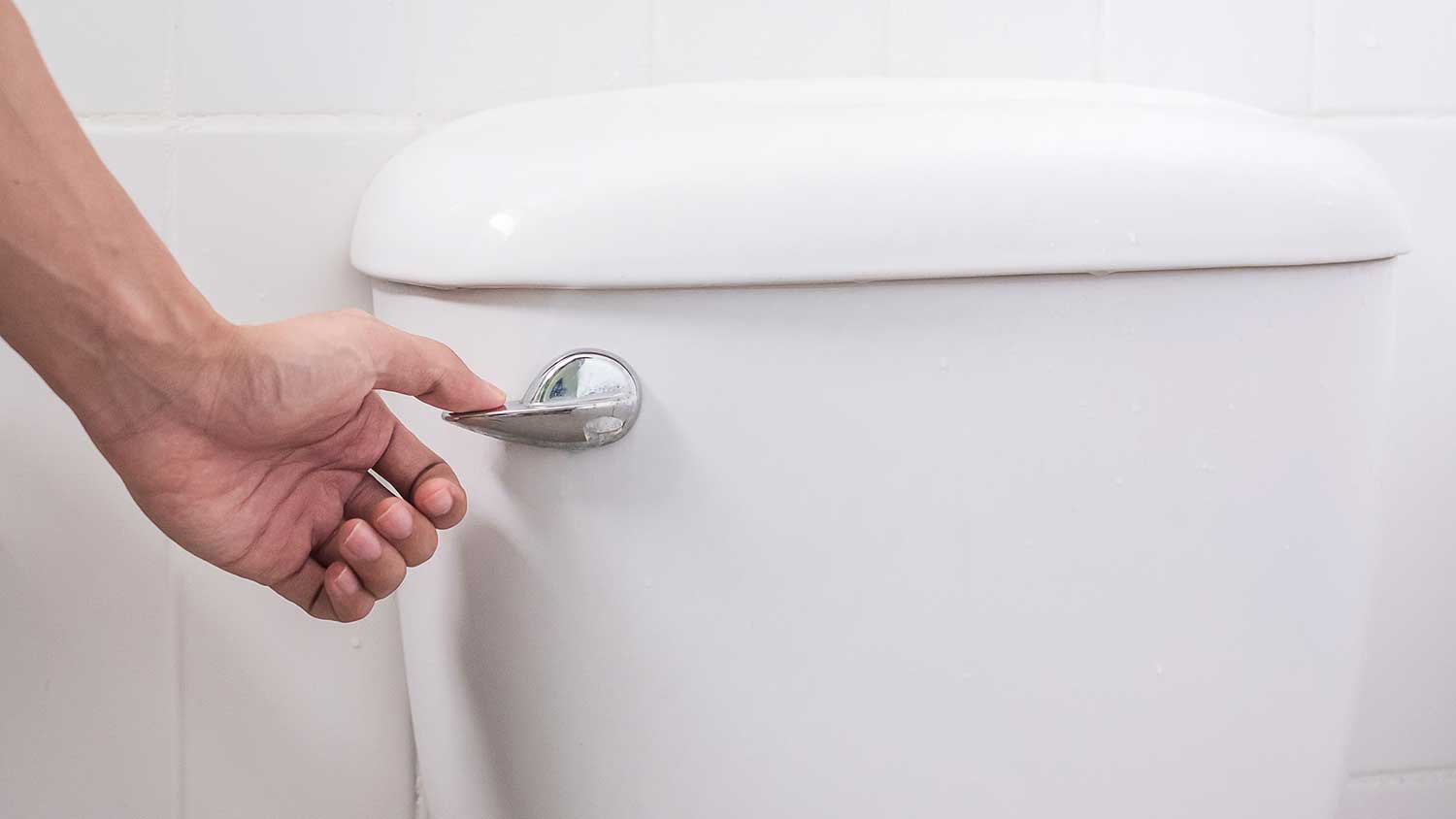Low-Flow Toilet Problems: Understanding the Pros and Cons
Is low-flow a no-go?


Low-flow toilets conserve water and save space in the bathroom.
Along with these benefits, they’re more prone to clogs and sewage smells.
If you have older plumbing, these toilets can be more expensive to install, but you’ll save money on your water bill.
Households can use 300 gallons of water daily, and a quarter of that comes from flushing the toilet. Low-flow toilets use less water per flush than standard toilets and can help households reduce water consumption. While they’re an excellent choice for the planet, low-flow toilet problems may mean they’re not right for your home—they clog more often and can cost more to install. Review the pros and cons of low-flow toilets before making your decision.
What Is a Low-Flow Toilet?
Low-flow toilets use 1.28 gallons per flush (gpf), which is lower than the federal requirement of 1.6 gpf, and some models use even less water. This type of toilet can help homeowners conserve water and save on their water bills. While they’re the toilet of choice for the environmentally-conscious—and some states even require them—homeowners should weigh the cons and pros of these toilets, especially if they have a busy household.
| Pros | Cons |
|---|---|
| Conserves water | Clogged pipes |
| Saves space | Sewage smell |
| Reduces water bills | Higher installation cost |
Pros of Low-Flow Toilets

Low-flow toilets offer cost savings and water conservation for the environmentally-conscious homeowner.
1. Conserves Water
When you flush the toilet, water rushes from the tank through the holes beneath the rim and the siphon jet hole across from the drain hole. This rush of water whisks waste through the pipes and into the sewer system or septic tank.
Low-flow toilets release less water per flush than a standard toilet, reducing your household's water use. Households can reduce toilet water use by 20% to 60% each year by installing WaterSense-labeled toilets, which can use as little as 0.79 gpf. WaterSense is a program sponsored by the U.S. Environmental Protection Agency (EPA).
2. Saves Space
Low-flow toilets use less water, so they can have a smaller tank and offer a more streamlined appearance. This is firmly in the pro column for those with bathrooms on the smaller side. Depending on your bathroom layout, you can carve out a little extra storage space with a smaller toilet.
3. Reduces Water Bills
The EPA estimates that homeowners could save over $110 per year on their water costs, which adds up to over $2,200 over the life of the toilet. In addition to lowering your water bill, these savings could help recoup the cost of purchasing and installing a low-flow toilet.
Cons of Low-Flow Toilets
Low-flow toilet problems stem from the low flow of water. While it may sound counterintuitive, the low flow may have trouble clearing all the waste down the drain and through the pipes, resulting in clogs, smells, and repairs. Speak with a toilet installer who can help determine if this toilet is right for your bathroom.
1. Clogged Pipes
Because low-flow toilets don’t push as much water through the pipes, they’re not as effective at eliminating waste. This means you may have to deal with the toilet clogging more often than with a standard toilet. To remedy the issue, you can sometimes double flush, but that defeats the purpose of having a low-flow toilet.
Never flush anything down the toilet other than toilet paper. Wipes (even if they're "flushable"), paper towels, and hygiene products can wreak havoc on your plumbing system. Call a plumber if you have a clogged toilet that a plunger can't handle.
2. Sewage Smell
If enough waste gets backed up pipes, smelly odors can build up and float back into your home. If you have a busy home and often host visitors, a low-flow toilet may not be the right choice and you may have to pay for extra plumbing and toilet repair costs.
3. Higher Installation Costs
A low-flow toilet might not be compatible if you live in a home built before the mid-1980s with older plumbing. Because older toilets used so much water to flush waste, the plumbing didn’t require the same careful positioning as it does for newer, low-flow models. You can still make it work with some plumbing modifications, but it will add to the total cost of installing a toilet.
Keep in mind that DIY installation is more difficult with a low-flow model than with a standard toilet. If you have a newer home, this may not be a concern, but check with your plumber to be sure.
Maintenance Tips to Avoid Common Low-Flow Toilet Problems
Toilet issues can quickly ruin a good day, so to avoid common low-flow toilet problems, follow these maintenance tips:
Use less toilet paper: Using a lot of toilet paper can strain the toilet’s ability to flush it away. Paying attention to how much toilet paper you use and possibly reducing the amount can help prevent clogs. Installing a bidet is one way to save on toilet paper.
Keep it clean: Because the toilet already uses less water than a standard model, make sure the water flows freely from the holes under the rim. To do this, clean the toilet regularly and get under the rim. You can use a mirror to get a good look and scrub problem areas with an old toothbrush.
Double flush if necessary: While double flushing every time counteracts the water conservation powers of a low-flow toilet, you can double flush occasionally if you’re flushing more waste than usual.
Alternatives to Low-Flow Toilets

The current federal standard for the amount of water toilets use is 1.6 gpf. This is much less than the average 5 to 7 gpf for toilets installed before 1982. So even if you don’t choose a low-flow toilet or can’t install one, you still use less water using standard toilets than those older toilets. When the time comes to replace your toilet, alternatives to low-flow toilets include:
Washdown: A washdown toilet has a wider trapway and larger drain hole than standard toilets, and it’s also more compact. This style uses water's gravity force to wash waste down the drain.
Siphon flush valve system: This is the type of toilet you most commonly encounter. It has a curved trapway, and water rushes from the tank through holes below the rim and from the siphon jet-hole.
Dual flush: If you’ve seen a toilet with two buttons for flushing, you’ve seen a dual-flush toilet. This style gives users an option for solid and liquid waste, with the former using more water than the latter.
Pressure assist: Pressure-assist toilets are common in commercial applications, but homeowners who need extra power can benefit from the pressurized air tank that forces water through the pipes in a powerful rush.
Is a Low-Flow Toilet Right for You?
If you want to save money and conserve water, a low-flow toilet might be the right choice for you, but be sure to consider the risk of clogged pipes and foul odors that can occur when the flow isn’t sufficient to push the waste through the pipes. If you have a lot of people in your household or entertain frequently, you may want to pass on a low flow in favor of a more forceful flush. You can also ask a toilet installer near you for recommendations based on your specific circumstances.
Frequently Asked Questions
Flushing the toilet only to realize it’s clogged can cause anxiety. To avoid a clogged toilet, use less toilet paper. If you notice that the toilet is flushing and refilling slower than usual, you can use a plunger to clear clogs in the S-trap. If that doesn’t work, call a plumber to check your system and possibly clear the drain lines.
While you shouldn’t increase the flow of your low-flow toilet by adjusting the water level in the toilet bowl set by the manufacturer, you can make the flow as efficient as possible by ensuring the rim jets under the rim are unobstructed. To do this, use a mirror to look under the rim and scrub them with a toothbrush or a small wire to clear any debris stuck in the holes. You can also watch for leaks, make sure the internal components are in good shape, and replace them if necessary.





- Gas Plumbers
- Plumbing Repairs
- Sump Pump Installation
- Wood & Pellet Stove Repair
- Shower Repair
- Wood Stove Services
- Emergency Plumbers
- Fire Sprinkler Contractors
- Perc Test Companies
- Toilet Repair & Installation
- Boiler Repair
- Sewer Line Repair
- Faucet Repair
- Main Drain Camera Companies
- Foundation Drain Installation
- French Drains
- Bathtub Replacement
- Subcontractors
- Storm Drain Contractors
- Affordable Plumbing
- Plumbing & Heating Companies
- Bathroom Repair Services
- Sink Installation
- Commercial Plumber
- Barndominium Builders
- Water Line Repair
- Faucet Installation
- Water Line Installation
- Leak Detection
- 12 Types of Toilets to Upgrade to in Your Bathroom Remodel
- 9 Tips to Reduce Your Toilet Water Usage
- 10 Toilet Facts That’ll Make You Appreciate Your Commode More
- How to Choose the Right Toilet for Your Home
- 9 Foolproof Water Conservation Tricks to Help You Save Money
- 7 Common Problems With Dual-Flush Toilets and How to Fix Them
- 2 Types of Toilet Flushing Systems and How to Choose the Best One for You
- Pressure-Assist Toilets: Pros, Cons, and More of What You Need to Know
- How a Toilet Flushes: Find Out What Happens After You Flush
- Why Is My Toilet Making Noise After Flushing? How to Diagnose a Finicky Toilet











